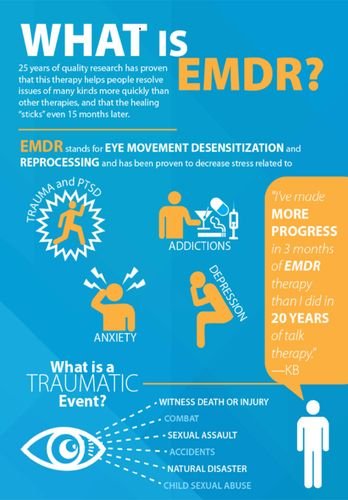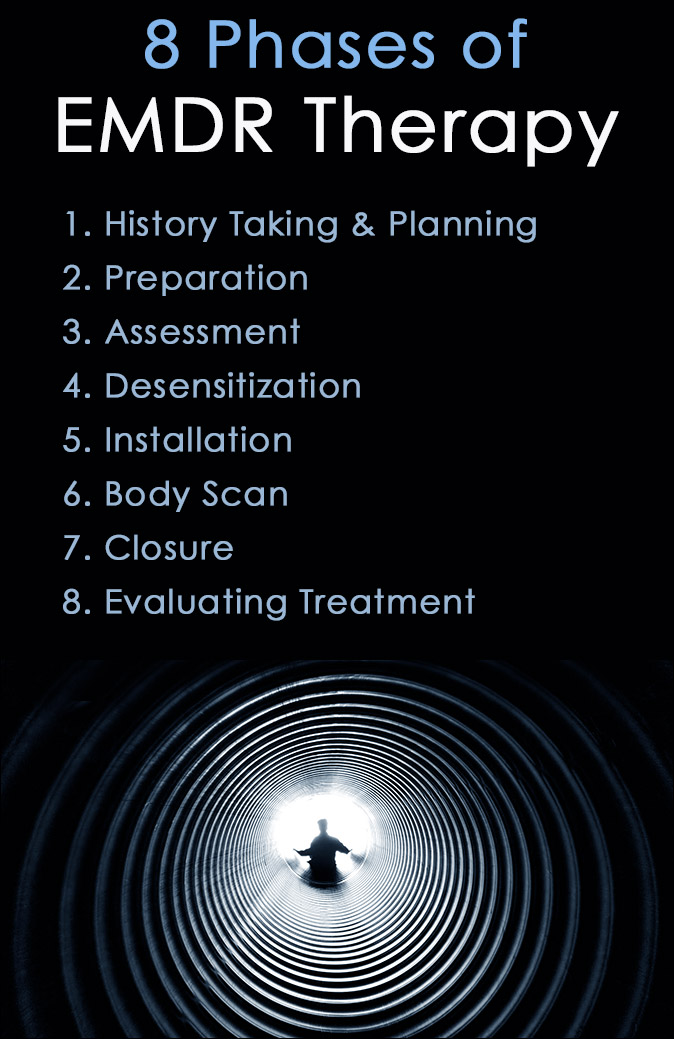A thorough overview to emdr therapy with its methods
Just How EMDR Therapy Works: a Thorough Appearance at the Process and Its Effectiveness
EMDR treatment has become a noticeable therapy for trauma-related problems. Its structured strategy includes various phases developed to promote the processing of distressing memories. Central to this approach is the idea of bilateral stimulation, which plays a crucial duty in just how memories are processed. Understanding these elements discloses much about the treatment's performance. What especially happens during an EMDR session, and how does it impact the restorative trip?
Understanding the Concepts of EMDR Therapy
EMDR therapy, or Eye Movement Desensitization and Reprocessing, operates on the property that unresolved terrible experiences can hinder psychological health. This cutting-edge restorative approach intends to help with the processing of distressing memories, permitting people to acquire a much healthier point of view on their past. Central to EMDR is the idea of bilateral excitement, normally achieved through assisted eye movements, which is believed to help incorporate traumatic memories right into a much more adaptive structure.

The 8 Phases of EMDR Treatment
The procedure of EMDR treatment unfolds over 8 unique stages, each designed to lead clients via a structured approach to healing trauma. The very first stage includes history-taking, where the specialist assesses the customer's background and identifies target memories. In the 2nd phase, clients learn leisure methods to take care of distress. The third stage concentrates on identifying adverse ideas connected with the distressing memory.
The 4th phase is where the desensitization procedure begins, allowing clients to refine the terrible memory. The fifth phase includes installing positive ideas to replace the adverse ones. In the 6th phase, clients are assisted to evaluate their emotional and physical responses to the processed memory. The seventh stage stresses closure, aiding customers return to a state of stability. Ultimately, the 8th stage entails reevaluation, where specialists and customers evaluate progression and address any kind of recurring distress. This thorough strategy cultivates a path to recovery and resilience.
The Role of Reciprocal Excitement
Bilateral stimulation is a vital component of EMDR treatment, assisting in the processing of distressing memories. This strategy involves alternating stimulation of both hemispheres of the brain, usually achieved through eye activities, auditory tones, or responsive feelings. The purpose of bilateral excitement is to involve the mind's all-natural details handling system, which may become interfered with adhering to injury.
By activating both sides of the brain, reciprocal stimulation assists customers accessibility and reprocess distressing memories in a more flexible means. This method motivates the integration of terrible experiences, reducing their psychological fee and enabling customers to develop brand-new perspectives.

Furthermore, reciprocal excitement may advertise leisure and minimize stress and anxiety throughout sessions, producing a safer atmosphere for clients to confront uncomfortable memories. Inevitably, this method boosts the therapeutic procedure, permitting people to approach healing and resolution.
Proof Supporting the Efficiency of EMDR
Research has revealed that EMDR treatment works in treating various psychological problems, particularly post-traumatic stress and anxiety disorder (PTSD) Countless research studies have demonstrated substantial decreases in PTSD signs following EMDR treatment. A meta-analysis of randomized regulated tests discovered that EMDR was as Discover More efficient as cognitive behavioral therapy (CBT) for PTSD, with lasting results observed also months after therapy. In addition, the American Psychological Association and the World Health and wellness Organization recommend EMDR as a suggested therapy for trauma-related conditions.
Past PTSD, study shows that EMDR can also benefit people struggling with anxiety, clinical depression, and phobias. A growing body of proof supports its usage in varied populations, including experts and kids - best emdr therapy in nyc. On the whole, the accumulating research study highlights EMDR's potential as a functional therapeutic option, paving the way for more exploration into its mechanisms and applications in psychological wellness treatment
What to Expect During an EMDR Session
During an EMDR session, clients can anticipate a structured yet adaptable method intended at processing terrible memories. The specialist begins by developing a safe setting, where customers can feel comfy sharing their experiences. Preliminary conversations concentrate on identifying particular memories and associated adverse ideas.
Customers are guided to concentrate on these memories while all at once taking part in bilateral excitement, commonly with directed eye motions or tapping. This double focus intends to assist in the processing of the injury, enabling clients to reframe their experiences and lower emotional distress.
Throughout Learn More Here the session, therapists monitor clients' reactions, readjusting the speed and strategy as needed. Sessions might include relaxation techniques or cognitive restructuring to enhance positive beliefs. In general, clients can prepare for a supportive environment that motivates self-exploration and recovery, eventually causing a higher sense of psychological well-being.
Often Asked Questions
Is EMDR Therapy Appropriate for Kid or Adolescents?
EMDR therapy can be appropriate for teenagers and youngsters, gave it is adapted to their developmental needs (best emdr therapy in nyc). Clinicians commonly customize techniques to ensure safety and performance, sustaining younger populaces in processing trauma and psychological distress
Exactly How Long Does EMDR Therapy Usually Last?
EMDR treatment normally lasts between 8 to 12 sessions, with each session ranging from 60 to 90 mins. Individual needs and the intricacy of injury can influence the general duration of therapy.
Can EMDR Treatment Be Done Remotely or Online?
EMDR therapy can undoubtedly be carried out from another location or online. Several specialists have actually adjusted their methods to virtual atmospheres, permitting clients to involve see this site in effective sessions from the convenience of their homes, keeping healing advantages.
What Are the Possible Adverse Effects of EMDR?
Prospective negative effects of EMDR therapy may consist of short-lived psychological distress, enhanced anxiousness, dazzling memories, and physical discomfort. People could also experience tiredness or headaches following sessions, as the mind refines extreme feelings and memories.
How Does EMDR Compare to Standard Talk Therapy?

EMDR treatment, or Eye Movement Desensitization and Reprocessing, runs on the property that unresolved terrible experiences can prevent emotional well-being. The procedure of EMDR therapy unravels over eight distinct stages, each developed to lead clients through an organized approach to healing trauma. Bilateral excitement is an essential part of EMDR treatment, promoting the handling of stressful memories. During an EMDR session, customers can anticipate an organized yet flexible technique intended at handling terrible memories. Prospective side results of EMDR therapy may consist of short-lived psychological distress, heightened anxiousness, vibrant memories, and physical discomfort.